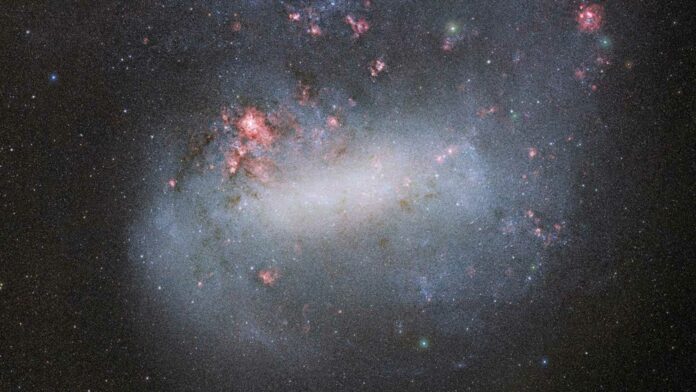When calculating luminosity distances—a term that describes the brightness of far-off objects in space—the tip of the red giant branch (TRGB) is an essential reference point. Even though many small-amplitude red giant stars (SARGs) have been found, their variability was previously believed not to matter when utilizing the TRGB as a standard reference.
Determining cosmic distances in an ever-expanding cosmos is like trying to find a steady ruler in a fabric that is always stretching. Astronomers use the Universe’s expansion rate measurements, such as the Hubble constant (H0), to determine its age and observable size.
The value of H0, however, is still up for debate because distinct measurements from different celestial objects disagree with one another. This argument leaves us with an imperfect grasp of the cosmos’s fundamental physics. The key to the answer is to make star-based distance estimations far more accurate.
A recent project headed by Laurent Eyer (University of Geneva), former EPFL undergraduate Summer Research Intern Nolan Koblischke (now at the University of Toronto), and professor Richard I. Anderson of EPFL attempts to use the unique signals given by red giants to improve cosmic distance measurements.
Anderson said, “We found that the acoustic oscillations of red giant stars tell us how to measure cosmic distances best using the Tip of the Red Giant Branch method.”
Stars undergo a significant change in their brightness evolution at the Tip of the Red Giant Branch (TRGB), where they begin to burn helium.
The TRGB is a prominent point with fewer, brighter stars placed above it in diagrams that plot stellar brightness against color. Astronomers use the TRGB as a “standard candle” to calculate cosmic distances. Similar to determining the distance of a lightbulb based on its brightness, astronomers can determine the distance to distant galaxies by comparing the TRGB’s known brightness to its observed brightness in those galaxies.
Researchers studied Red Giants in the nearby galaxy known as the Large Magellanic Cloud (LMC), which orbits the Milky Way. They analyzed data from the Optical Gravitational Lensing Experiment (OGLE) and the ESA Gaia spacecraft. Understanding star physics requires an understanding of the LMC.
Astronomers made the startling revelation that all stars at the Tip of the Red Giant Branch (TRGB) show periodic brightness changes. Similar to earthquakes on Earth, sound waves moving through the stars generate oscillations in their brightness, which causes these changes. Although these oscillations were previously recognized, their importance for measuring distance had been disregarded. But now that they could classify stars according to their age, the astronomers had a more sophisticated method for calculating distances throughout the Universe.
Anderson explains: “Younger red giant stars near the TRGB are a little less bright than their older cousins, and the acoustic oscillations that we observe as brightness fluctuations allow us to understand which type of star we’re dealing with: the older stars oscillate at a lower frequency – just like a baritone sings with a deeper voice than a tenor!”
Given that Red Giant stars may be found in almost every galaxy, this distinction is essential to ensuring the exact distance measurements needed for cosmology and producing the finest map of the local Universe.
Along with these enhancements, the study reveals several other TRGB distance method advancements that are critical to comprehending current discussions about the Hubble constant tension.
Anderson said, “Now that we can distinguish the ages of the Red Giants that make up the TRGB, we can further improve the Hubble constant measurement based on that. Such improvements will further test the Hubble constant tension and may lead to groundbreaking new insights into the basic physical processes that decide how the Universe evolves.”
Journal Reference:
- Richard I. Anderson, Nolan W. Koblischke, Laurent Eyer. Small-amplitude Red Giants elucidate the nature of the Tip of the Red Giant Branch as a standard candle. The Astrophysical Journal Letters 963 (2), L43 (07 March 2024). DOI: 10.3847/2041-8213/ad284d
